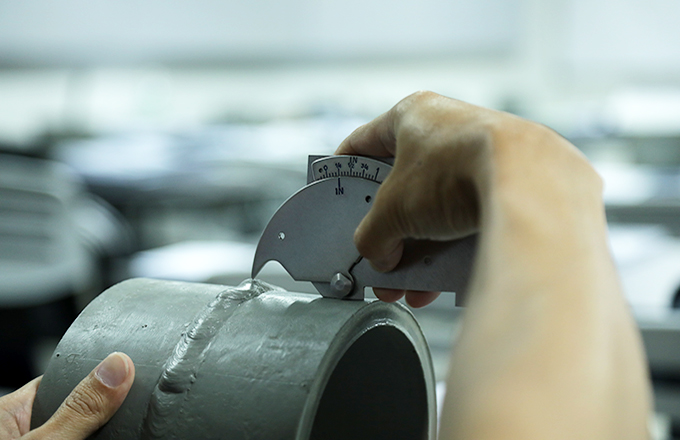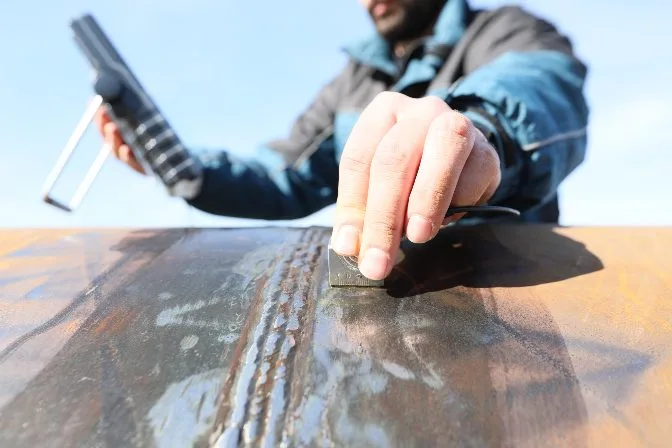Premier Houston Welding Inspection Solutions for Industrial Requirements
Premier Houston Welding Inspection Solutions for Industrial Requirements
Blog Article
A Comprehensive Guide to Understanding Exactly How Welding Evaluation Works: Techniques, Specifications, and Finest Practices for Quality Assurance in Steel Construction
Comprehending the intricacies of welding inspection is vital for keeping the integrity of metal manufacture. Applying best techniques can substantially enhance top quality assurance steps. The landscape of welding inspection is not without its obstacles.
Relevance of Welding Evaluation
Although welding is an important process in various sectors, its honesty straight impacts the security and efficiency of frameworks and parts. Effective welding inspection is vital for identifying defects that could jeopardize the high quality and toughness of welded joints. This process ensures adherence to established criteria and requirements, which are vital for maintaining architectural stability and functional integrity.
Welding evaluation offers numerous purposes, consisting of verifying that the welding procedure has actually been performed properly, analyzing the quality of materials utilized, and verifying that the ended up product satisfies governing and sector criteria (Houston Welding Inspection). Via strenuous examination, prospective issues such as porosity, splits, and incomplete combination can be found early, protecting against costly repair services and reducing safety risks
Moreover, regular welding evaluations foster self-confidence amongst stakeholders, consisting of engineers, clients, and regulative bodies, by demonstrating a dedication to top quality assurance. The importance of welding assessment can not be overstated; it is indispensable not only for conformity with legal demands however additionally for boosting the general efficiency of welded structures. Ultimately, a robust welding examination program is a positive procedure that safeguards against failings, making sure the durability and dependability of welded components in their desired applications.
Usual Welding Evaluation Techniques

Visual examination is the very first line of protection, permitting inspectors to recognize surface area problems such as cracks, undercuts, or incomplete blend. Radiographic testing uses X-rays or gamma rays to expose inner imperfections, making it ideal for complex welds. Ultrasonic screening utilizes high-frequency audio waves to find subsurface flaws, offering accurate measurements of weld honesty.
Magnetic particle screening is reliable for ferromagnetic products, highlighting surface area and near-surface suspensions when particles are related to a magnetic field. On the other hand, dye penetrant screening utilizes a liquid color to expose surface-breaking flaws, guaranteeing that also the tiniest imperfections are spotted.
Each method has its restrictions and toughness, typically requiring a combination of techniques for comprehensive analysis - Houston Welding Inspection. By applying these evaluation methods, high quality assurance in metal manufacture is achieved, ensuring that bonded frameworks satisfy safety and security and performance requirements
Industry Requirements for Welding


The American Welding Society (AWS) and the American National Specification Institute (ANSI) are 2 popular companies that develop welding criteria. AWS D1.1, for instance, describes the needs for welding steel frameworks, while AWS D1.2 concentrates on aluminum. Worldwide, the ISO 3834 typical addresses high quality demands for fusion welding, supplying a helpful resources framework suitable throughout nationwide borders.

Best Practices for High Quality Assurance
Quality control in welding is extremely important to achieving secure and resilient buildings. Executing best methods makes certain that every weld meets the required requirements and standards. Establishing an extensive top quality administration system (QMS) tailored to the specific welding job is crucial. This QMS must specify duties, procedures, and duties to alleviate dangers and boost accountability.
Normal training and accreditation of welding employees are crucial for preserving a proficient labor force. Continuous education on the most recent welding strategies and technologies makes sure that examiners and welders are well-informed concerning present standards and techniques.
Additionally, performing pre-weld assessments to examine products and devices can prevent defects before they take place. Houston Welding Inspection. During the welding procedure, real-time surveillance and documentation of welding parameters assist recognize variances quickly. Post-weld evaluations must entail detailed evaluations using non-destructive testing (NDT) techniques to ensure the stability of the welds
Furthermore, keeping clear interaction among staff member promotes a culture of quality. Routine audits and testimonials of the welding process help identify areas for improvement. By sticking to these ideal techniques, organizations can achieve optimal quality control, eventually bring about boosted security and performance in metal fabrication projects.
Obstacles in Welding Assessment
Although welding evaluation is important for making sure architectural honesty, it provides a selection of difficulties that can complicate the have a peek at this website evaluation process. One substantial difficulty is the variability in welding methods and materials made use of, which can affect the uniformity of weld high quality. Different welders may utilize differing techniques, causing discrepancies that inspectors need to review and recognize.
Another obstacle entails the discovery of problems. Non-destructive screening (NDT) methods, such as ultrasonic and radiographic testing, can be complex and require skilled specialists to translate results accurately. Incorrect positives or negatives can occur, potentially causing expensive rework or compromised safety.
In addition, the visibility of ecological elements, such as temperature and humidity, can influence the integrity of welds and the efficiency of evaluation strategies. Inspectors have to click here for more likewise browse the governing landscape, ensuring conformity with industry requirements, which can vary by jurisdiction and application.
Verdict
In conclusion, welding assessment plays a vital duty in ensuring the integrity and safety and security of metal fabrication. Employing a range of evaluation methods, sticking to established market criteria, and implementing effective top quality administration techniques collectively boost the reliability of bonded structures. Despite the obstacles faced in the evaluation process, a dedication to constant renovation and adherence to best techniques can considerably bolster the quality control framework, promoting better self-confidence among stakeholders in the welding market.
Efficient welding examination is important for identifying defects that could endanger the top quality and longevity of welded joints.Moreover, constant welding examinations foster self-confidence among stakeholders, consisting of designers, customers, and regulatory bodies, by demonstrating a dedication to quality guarantee.The American Welding Society (AWS) and the American National Standards Institute (ANSI) are 2 prominent companies that establish welding criteria. During the welding procedure, real-time monitoring and documentation of welding specifications help recognize inconsistencies quickly. Despite the challenges dealt with in the evaluation procedure, a commitment to constant renovation and adherence to finest methods can significantly boost the top quality assurance structure, cultivating better self-confidence among stakeholders in the welding market.
Report this page